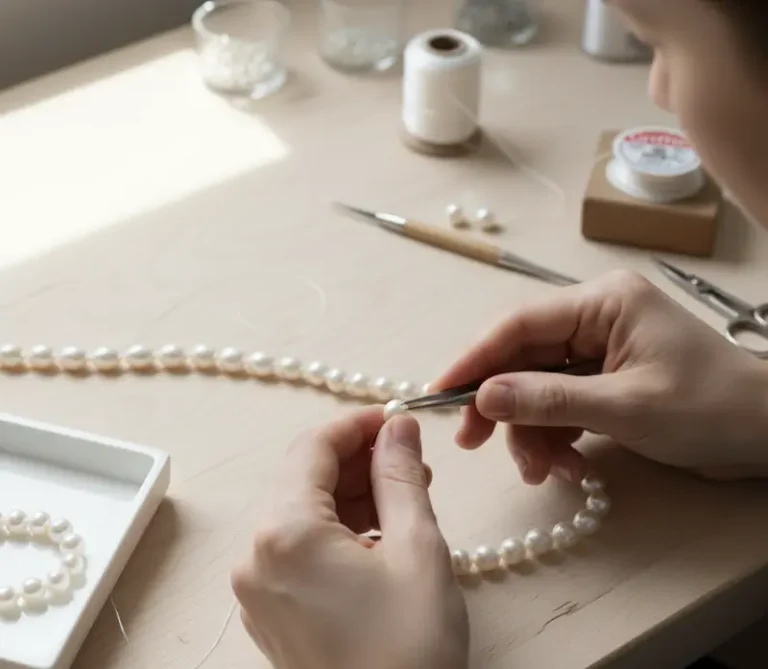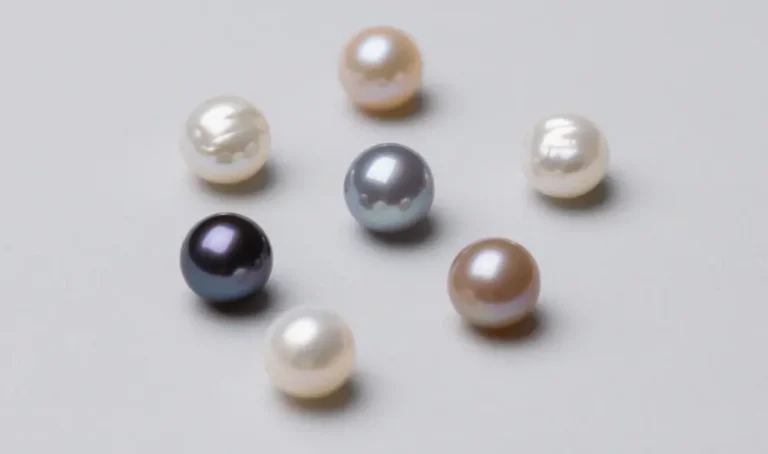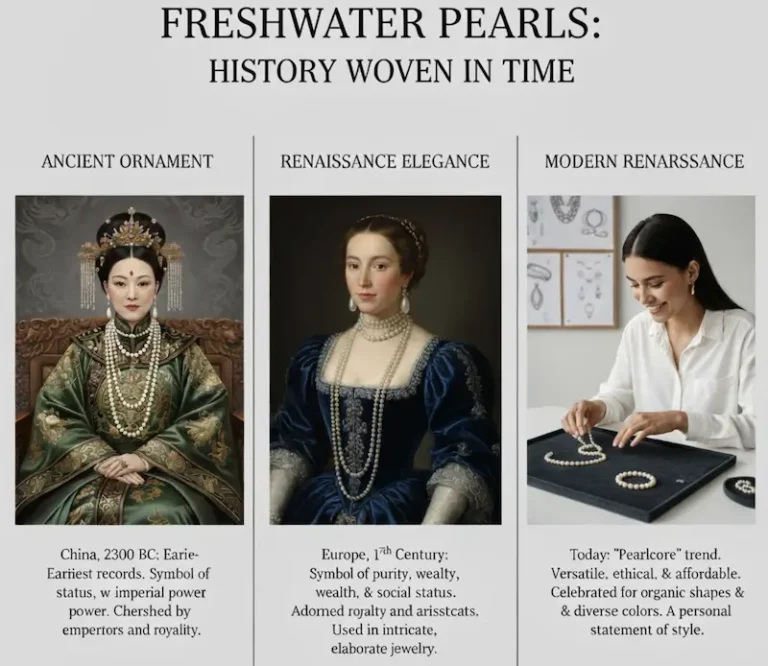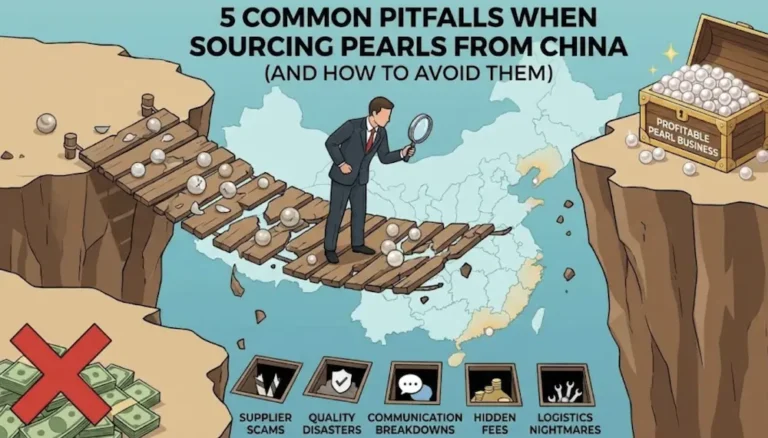Knowing the difference between freshwater vs saltwater pearls can help you choose the best ones and save you hundreds of dollars when you shop for pearls. Knowing these important differences will make you a confident pearl buyer, whether you’re buying your first strand or adding to a collection.
Pearls may seem complicated at first, but once you know the main differences, it becomes much easier to choose between these two types. Let’s get into all the details about freshwater and saltwater pearls.
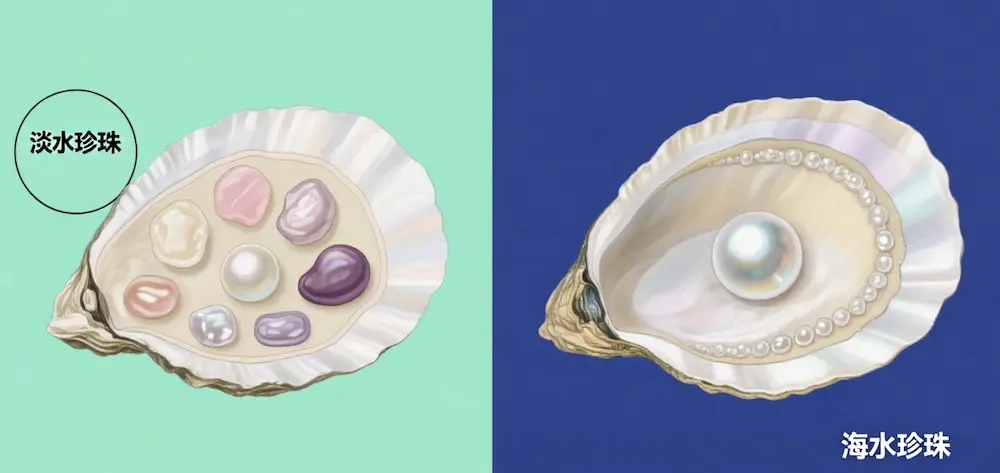
7 Amazing Differences Freshwater vs Saltwater Pearls
1. Origin and Environment
The main difference in the debate of freshwater vs saltwater pearls is where they come from. Mussels that live in rivers, lakes, and ponds make freshwater pearls. Most of them come from China. These pearls form in freshwater places where the water doesn’t have any salt in it.
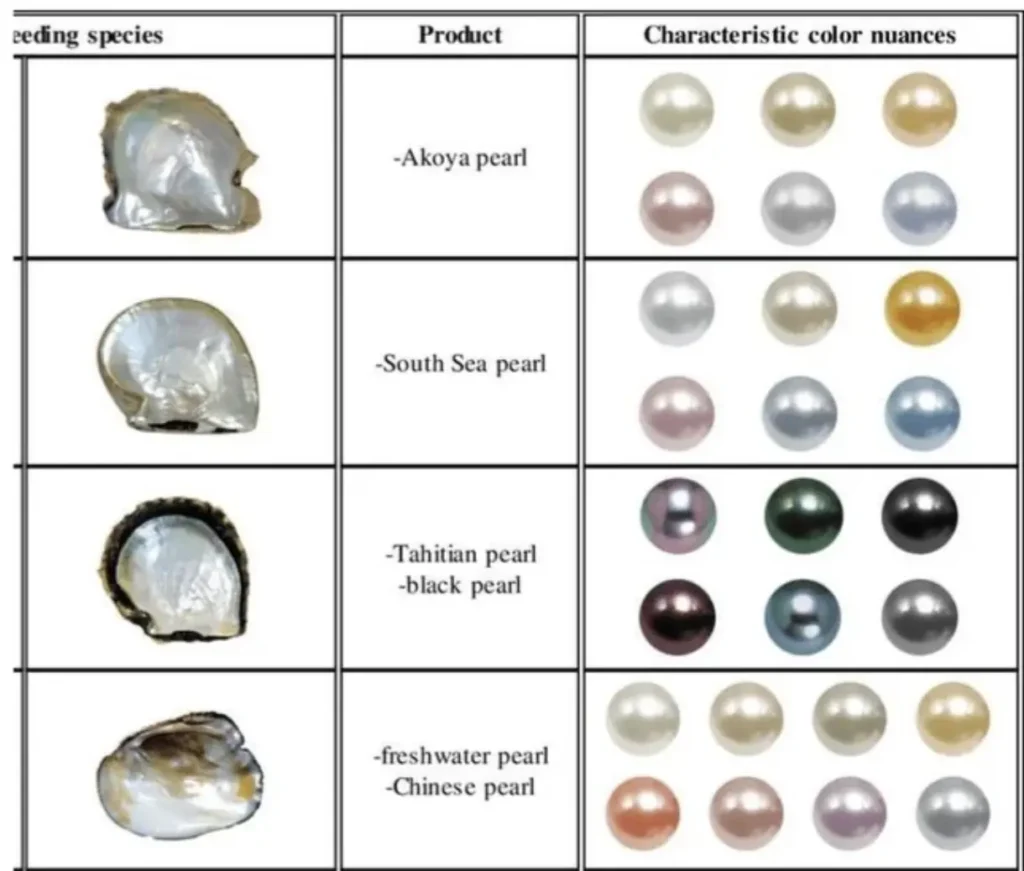
Saltwater pearls, on the other hand, grow inside oysters that live in the ocean. This is a key point in understanding the differences between freshwater and saltwater pearls. Akoya pearls come from Japan and China, South Sea pearls come from Australia and Southeast Asia, and Tahitian pearls come from French Polynesia. There are different things about each type of saltwater pearl.
Why is this difference important? The place where pearls grow has a direct effect on how they form, what they look like, and how much they cost. A good Pearl Manufacturer will always say whether their pearls are freshwater or saltwater.
2. The Formation Process: How Environment Shapes Beauty
Knowing how freshwater and saltwater pearls are made can help you understand the differences in the Freshwater vs Saltwater Pearls debate. Freshwater mussels can make up to 50 pearls in one growing season, but it usually takes 2 to 6 years for them to grow. Their lower prices are due in part to this higher yield.
Oysters that live in salt water work in a different way. Most can only make 1–2 pearls per growing cycle, and the process takes longer—Akoya pearls take 1–3 years and South Sea pearls can take up to 5 years. This factor of scarcity has a big effect on prices.
The way they grow is also different. Freshwater pearls often grow around a piece of tissue that doesn’t have a bead nucleus. This makes pearls that are almost all nacre. Saltwater pearls usually form around a round bead nucleus, which is why they are usually more round.
| Pearl Type | Cultivation Time | Pearls per Cycle | Nucleus Type |
|---|---|---|---|
| Freshwater | 2-6 years | Up to 50 | Tissue only |
| Saltwater Akoya | 1-3 years | 1-2 | Bead nucleus |
| South Sea | 2-5 years | 1-2 | Bead nucleus |
| Tahitian | 2-3 years | 1-2 | Bead nucleus |
3. Shape and Size: The Visual Differences
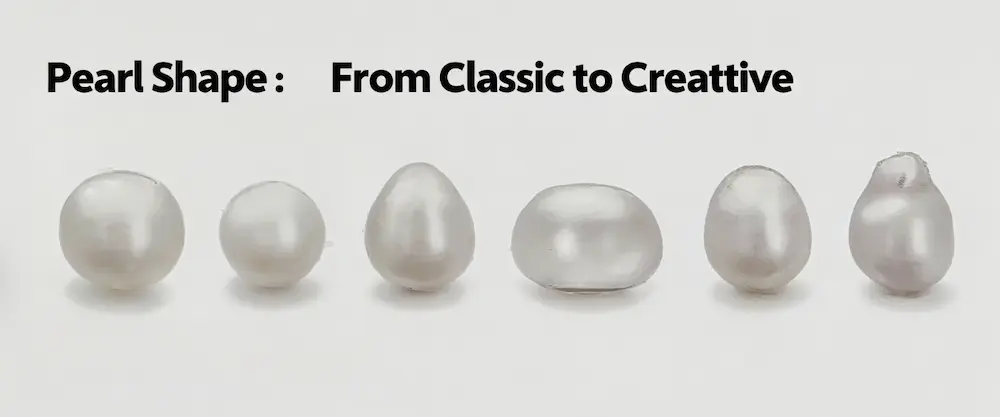
There are a lot of different shapes of freshwater pearls, including round, oval, button, baroque, and completely random ones. This variety is a key point in the freshwater vs saltwater pearls discussion. This is because they only nucleate in their tissue.
Because they have a bead nucleus, saltwater pearls tend to be more round and even in shape. High-quality saltwater pearl strands show this consistency because each pearl is about the same size and shape.
Different Sizes:
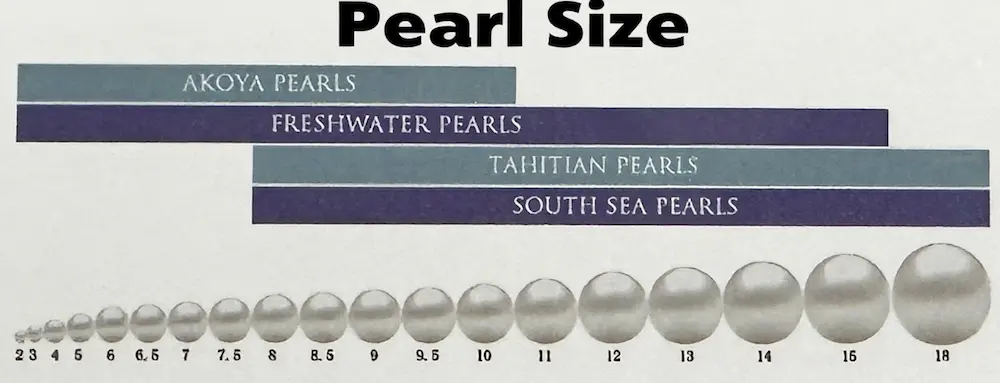
- Freshwater pearls come in sizes from 2mm to 15mm, with some larger baroque shapes.
- Akoya saltwater pearls range in size from 2mm to 11mm.
- South Sea pearls range from 8mm to 20mm.
- The size of Tahitian pearls ranges from 8mm to 18mm.
The fact that freshwater pearls don’t have perfect shapes isn’t a flaw; it’s a natural trait that many jewelry designers now love because it gives their pieces a modern, organic look, adding an interesting dimension to the Freshwater vs Saltwater Pearls discussion.
4. Luster and Surface Quality
The price of pearls often depends on how shiny they are, which is a key difference in the freshwater vs saltwater pearls discussion. Saltwater pearls, especially high-quality Akoyas, have a very bright shine that looks like a mirror. This makes them stand out. This strong reflection is caused by the tightly packed layers of nacre that form in saltwater.
Freshwater pearls have a softer, more subtle shine. This softer glow is different from the sharp brilliance of saltwater types, but it is still beautiful in its own way. But high-quality freshwater pearls can have a shine that is surprisingly good and can even match some saltwater pearls.
The two types also have different surface qualities. Freshwater pearls may have more surface irregularities, while saltwater pearls usually have cleaner surfaces with fewer blemishes. These features have a direct effect on prices and help explain why the prices of wholesale pearls can be so different.
5. Color Variations: Nature’s Palette
The colors of freshwater and saltwater pearls are very different. This is a key point in the freshwater vs saltwater pearls debate. Freshwater pearls come in a wide range of natural colors, including white, cream, pink, peach, lavender, and even darker purples. These colors occur naturally, without any artificial treatment, giving you a ton of choices to match your personal style.

Saltwater pearls have their own special colors:
- Akoya pearls are mostly white, cream, or silver with hints of rose or green.
- South Sea pearls come in white, cream, champagne, or gold.
- Tahitian pearls come in dark colors like black, gray, green, blue, and peacock.
The two types of colors are made in different ways. The color of freshwater pearls comes from the natural pigments in mussels, while the color of saltwater pearls comes from the type of oyster and the ocean’s conditions.
6. Price Comparison: Value for Your Investment
The biggest difference you’ll see right away when you choose between freshwater and saltwater pearls is the price. This is a crucial point in the freshwater vs saltwater pearls debate. Freshwater pearls are a great deal. You can get nice strands for as little as $50 and really high-quality pieces for as much as $2,000.
Saltwater pearls cost more because they are rare and hard to grow:
- Strands of Akoya pearls cost between $250 and $5,000.
- South Sea pearls can cost anywhere from $1,000 to more than $100,000 for the best ones.
- Depending on their quality, Tahitian pearls can cost anywhere from $500 to $25,000 or more.
The Gemological Institute of America says that a pearl’s price depends on its size, shape, shine (luster), how smooth the surface is, and its color. Saltwater pearls are generally more expensive than freshwater pearls of the same quality because they are harder to find.
Price Factors Comparison Chart:
| Factor | Freshwater Impact | Saltwater Impact |
|---|---|---|
| Rarity | Lower (high yield) | Higher (limited yield) |
| Size | Moderate impact | Major impact |
| Shape | Less critical | Critical for value |
| Luster | Important | Extremely important |
| Color | Variety adds value | Rare colors premium |
7. Durability and Care
Lastly, both freshwater and saltwater pearls need similar care, but a key difference in the freshwater vs saltwater pearls discussion is how durable they are. Freshwater pearls, being almost completely made of nacre (the material that gives pearls their shine and beauty), tend to be more resistant to wear and tear. Because they’re solid nacre all the way through, they’re less likely to get chipped or have their outer layers peel off.
You need to be more careful with saltwater pearls that have a thin layer of nacre over a bead inside. But if you buy saltwater pearls that are thick with nacre, they can be just as strong as freshwater pearls. The key is to buy from sellers you can trust who make sure the nacre is thick enough.
Many people choose freshwater pearls because they are strong and won’t cost a lot of money. But for special occasions or if you want to pass down a valuable piece, saltwater pearls are hard to beat in terms of their unique beauty and reputation. This is a common consideration when debating freshwater vs saltwater pearls.
Which Type Should You Choose?
So, when you’re trying to decide between freshwater vs saltwater pearls, here’s a little checklist:
Go for freshwater pearls if you want:
- Lots of options without spending a fortune
- Something you can wear every day
- Unique, less-than-perfect shapes
- A variety of natural colors
- Really good resistance to wear and tear
Choose saltwater pearls if you want:
- A classic, elegant look for dressy occasions
- A valuable piece that could become an heirloom
- A beautiful, strong shine and perfectly round shape
- That traditional pearl look
- Jewelry with a history and legacy
It all comes down to how much money you have, how you live your life, and what you like. A lot of pearl lovers have both types and like to wear them with different outfits and for different events.
Making Your Pearl Purchase
When you buy pearls, whether you’re debating freshwater vs saltwater pearls, always go to a reputable dealer who can guarantee their quality and authenticity. Get clear information about where the pearl came from, if it has been treated in any way, and how good it is.
Take a good look at pearls under bright light to see how they shine and if there are any blemishes on the surface. Don’t be afraid to put different types right next to each other. This will help you understand the differences and feel good about your choice.
When choosing between pearls, the Pearl Society says you should think about what you’ll mostly use them for, how much you want to spend, and what styles you like. Remember that both freshwater and saltwater pearls are pretty in their own way and have their own advantages.
When you buy jewelry, it’s important to know the difference between freshwater vs. saltwater pearls. Freshwater pearls are beautiful and affordable, while saltwater pearls have a more upscale look. Either way, you’ll love the natural beauty of these gems. Each type lets you enjoy owning pearls in its own way, so you can treasure these classic gems for a long time.
To be happy with your purchase, you need to know what you’re getting and pick pearls that fit your needs, budget, and style, especially when considering the choice between Freshwater vs Saltwater Pearls. You can now confidently dive into the fascinating world of pearl jewelry!
FAQs
How can you tell a freshwater pearl from a saltwater pearl?
Freshwater pearls are often not perfectly round and come in a wider range of natural colors. Saltwater pearls usually have a more even shape and shine like a mirror.
Is it worth buying freshwater pearls?
Yes. Freshwater pearls are a great choice for beautiful, everyday jewelry because they are affordable, last a long time, and come in a wide range of shapes and colors.
Which pearl is expensive, freshwater or saltwater?
Saltwater pearls are generally more expensive due to their rarity, classic shapes, and intense luster.
Are Tahitian pearls freshwater or saltwater?
Tahitian pearls are saltwater pearls.


